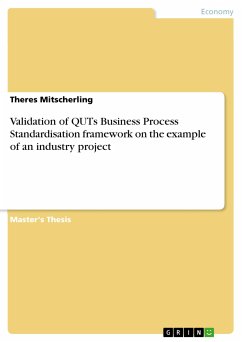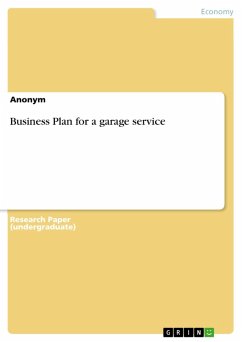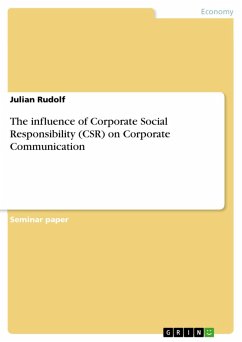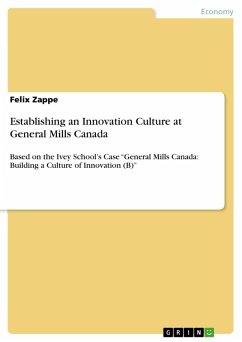Seminar paper from the year 2016 in the subject Business economics - Business Management, Corporate Governance, grade: 1,3, , language: English, abstract: Powered by hydro and steam power, at the end of the 18th century mechanical production facilities began to replace human labour. What is today known as the Industrial Revolution allowed for a far more efficient use of resources such as labour and soil. During the Second Industrial Revolution towards the end of the 19th century manual labour started to be increasingly replaced by mass production (as developed by Frederick Winslow Taylor), the introduction of assembly-line work (promoted by Henry Ford) thanks to the use of electricity. The introduction of electronic control systems and information technology in the 1970s finally heralded the Third Industrial Revolution. All three industrial revolutions have brought about accelerated processes and a degree of automation. In an increasingly global market the Internet of Things (products, production facilities, tools) connects the real with the virtual world and Cyber Physical Systems (CPS) are the foundation of the Fourth Industrial Revolution (Industry 4.0 - see Figure 1). CPS is an umbrella term for software-intensive embedded systems (ES) which are based on connected, integrated hardware- and software components in products or industrial production facilities (smart production) that are able to communicate with each other. Exactly these global markets with geographically diverse production locations, the changes brought about by Industry 4.0, CPS and ES pose new challenges for the established process management systems of companies used to steer and manage suppliers and partners. These challenges pertain all Industries irrespective of the nature of the products and services produced. This paper will examine the requirements and opportunities that follow from these developments. In the second chapter will focus on the increasingly complex Business to Business (B2B) demands placed on Total Quality Management (TQM) systems in the context of the 'Control of externally provided processes, products and services'. The central question of the term paper is to evaluate the extent of ISO norms can assume a supporting function in this regard, particularly such norms that belong to the ISO 9000 family. The starting point is chapter 8.4 of ISO norm 9001:2015 'Control of externally provided processes, products and services'.
Dieser Download kann aus rechtlichen Gründen nur mit Rechnungsadresse in A, B, BG, CY, CZ, D, DK, EW, E, FIN, F, GR, HR, H, IRL, I, LT, L, LR, M, NL, PL, P, R, S, SLO, SK ausgeliefert werden.









